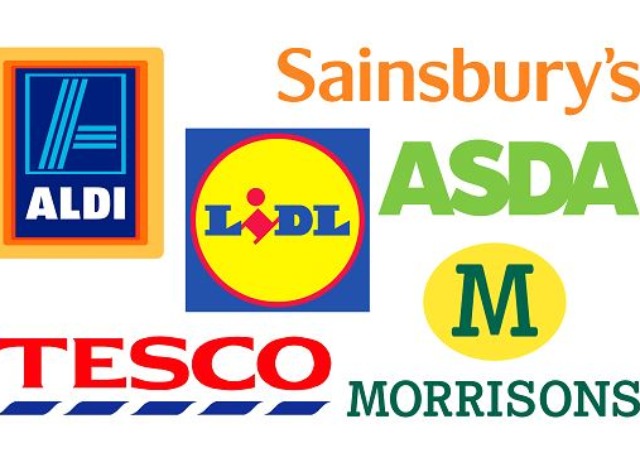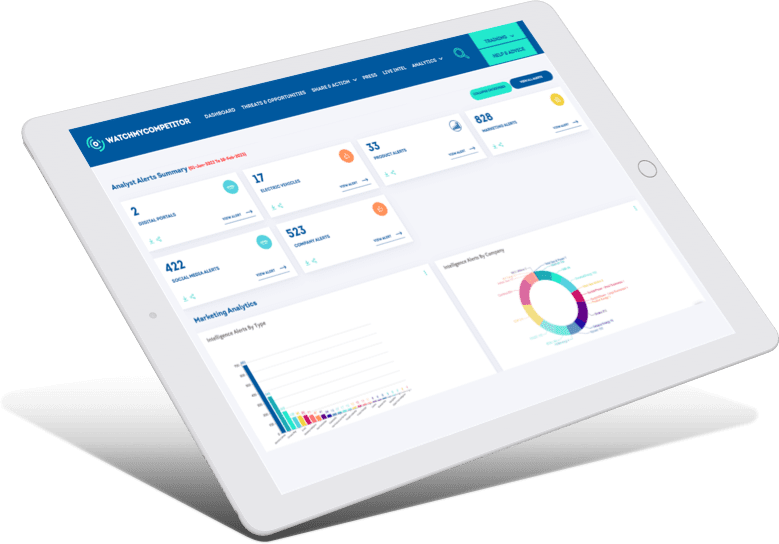No matter what kind of product or service you offer, or which market you operate in, pricing is one of the most crucial elements in any business strategy. Your price not only affects your profitability and growth, it also influences how customers perceive and value your product.
With increased competition and the ease of comparing prices online — customers are more empowered and informed than ever before.
In a few simple clicks, customers can quickly evaluate your offering and compare it to countless rivals who are also vying for their attention. Your ability to price competitively is vital as it can ultimately be the difference between a sale and a missed opportunity.
So how do you set the optimal price for your product or service?
One of the most effective methods is to use a competition based pricing strategy that aligns the prices of your products or services with the current rates in the market. This comprehensive guide will help you understand what competition based pricing is, how it works, and why it can be beneficial for your business.
You will also learn how to implement competition based pricing, what tools and techniques you can use, and what challenges and risks you need to consider.

Understanding Competition Based Pricing
Competition based pricing is a strategic approach that entails monitoring what your competitors are charging and adapting your prices accordingly. It’s a common and effective pricing strategy that is often used in markets where there is high competition with similar product offerings.
However, competition based pricing requires more than simply matching or undercutting your rivals in terms of price. It involves conducting thorough market research to understand the full scope of the competitive landscape and careful analysis of your own costs, value proposition, target market, and market positioning.
Identifying these factors will help you determine your break-even point, profit margin, competitive advantage, and your optimal price.
The Benefits & Challenges
Competition based pricing has a unique set of benefits and challenges that you need to be aware of in order to implement this strategy effectively.
Benefits of competition based pricing
Market positioning
Competition based pricing provides a dynamic framework for you to position yourself strategically within the market. By closely monitoring and aligning your prices with those of your competitors, you’re communicating to consumers about where your product or service stands in relation to others.
The price of your offering can significantly impact consumer decision-making and attract various customer segments based on their price sensitivity and perceived value.
Customer loyalty
Crafting competitive prices not only attracts new customers, it also fosters loyalty among existing ones. When customers perceive they are getting value for their money, it can lead to positive recommendations and repeat business.
This provides you with the ability to expand your customer base, boost retention rates, and increase customer lifetime values.
Flexibility & responsiveness
Competition based pricing allows for flexibility and responsiveness in a fast-paced business environment. This enables real-time price adjustments in response to market shifts, competitor actions, and consumer preferences.
It also provides a readily available benchmark, saving time and resources compared to complex internal calculations related to pricing.
Challenges of competition based pricing
Margin pressure
Fixating on competitor prices can make you lose sight of your own cost structure. This can lead to setting prices too low, jeopardising profitability, and hindering your ability to invest in innovation or quality improvements.
Overemphasis on price
Competition based pricing can sometimes lead to an overemphasis on price at the expense of other important factors like product quality, customer service, and brand reputation.
It’s crucial to maintain a holistic approach, where price is just one of the many factors you consider in your overall business strategy.

Setting The Right Price Points
Below are some key considerations for determining and setting the right price points for your products or services.
1) Competitor analysis
The most crucial element of competitor-based pricing involves identifying your key competitors and gaining a comprehensive understanding of their pricing strategies. Are they pricing their products lower or higher than yours? How much value are they providing for their prices? What kind of discounts or promotional offers do they have?
Understanding these aspects gives you valuable insights into how you should price your own products or services so they are competitive in the market.
2) Customer value perception
The price you set should reflect the value that customers perceive they are getting. This involves understanding your customers’ needs, preferences, and willingness to pay. Conducting surveys, customer interviews, and market research can reveal important information about customer value perceptions.
3) Strategic positioning
Your pricing strategy should align with your overall business strategy and brand positioning objectives. For example, if you want to position your brand as high-quality or luxury, then you may want to set a higher price point.
Conversely, if your goal is to attract more price-sensitive customers, then you may want to set a lower price to appeal to this segment of the market.
4) Market conditions
Factors such as supply and demand, economic conditions, and industry trends can also influence your pricing decisions. It’s important to stay up-to-date and informed about shifting market conditions to make timely adjustments to your prices if needed.
Leveraging Technology For Pricing Analysis
In today’s digital age, technology plays a pivotal role in conducting effective and efficient pricing analysis.
Advanced tools such as competitive intelligence platforms allow you to gain real-time insights into competitor pricing strategies, automate time-consuming processes, and help you make data-driven pricing decisions.
Competitive intelligence platforms monitor, collect, and analyse data from various sources — including competitors’ websites, social media platforms, and online marketplaces.
They have the ability to track changes in competitors’ prices, new product launches, promotional offers, and more.
This real-time data provides you with timely insights about your competitors’ pricing strategies, so you can remain agile and responsive with your pricing strategies.
For example, if a competitor lowers their prices, a competitive intelligence platform can alert you in real-time, allowing you to assess the situation quickly and adjust your prices accordingly.
Adapting to market changes
The market is constantly changing, and so are the needs and preferences of your customers. To maintain your competitiveness and profitability, it’s essential that you adapt and adjust your pricing strategies in response to these changes.
Strategies For Agile Pricing
A) Gather competitive intelligence
Maintain a close eye on your competitors’ pricing moves, marketing strategies and customer reviews. Understanding their approach to pricing and how it is received by customers can reveal their winning strategies, allowing you to adapt and optimise your own approach to maximise profitability and market share.
B) Obtain data-driven insights
Leverage information gained from market research, sales data, and analytics tools to track demand trends, price elasticity and consumer behaviour.
These insights can help you outmanoeuvre your competitors by identifying their pricing vulnerabilities, exploiting unmet customer needs, and adjusting your pricing approach based on current market conditions.
C) Leverage technology
Invest in advanced tools and software to accumulate and analyse vast amounts of data that would typically be difficult or time-consuming to obtain manually. This saves valuable time/resources and enables you to stay in sync with current market dynamics to promptly align your pricing strategies with the latest market trends.
D) Experimentation & A/B testing
Don’t be afraid to try out different pricing models and experiment with fluctuating pricing techniques. A/B testing can help you gauge customer responses to different price points, so you can refine your pricing strategy and determine an optimal price for your offering.
E) Embrace team collaboration
Encourage open communication across various departments like sales, marketing and finance. This will allow you to gather diverse perspectives, which can lead to more informed and effective pricing decisions.
Implementing Competition Based Pricing
1) Conduct competitor analysis
The first step is to identify your key competitors and analyse their pricing strategies. You need to know who you are competing with, what they charge for their products or services, and how they position themselves in the market.
This involves monitoring their prices, special offers, discounts and overall pricing patterns.
2) Understand your costs
While competition based pricing primarily focuses on competitor prices, it’s essential not to overlook your own costs in delivering your offering. Ensure that the price you set covers your costs and leaves room for a reasonable profit margin to maintain sustainable growth.
3) Identify pricing opportunities
Once you have a clear understanding of the competitive landscape and your costs, you can then focus on identifying pricing opportunities that will give you a competitive edge.
This could be a gap in the market where you can offer a product at a lower price than your competitors, or a unique feature that allows you to charge a premium price.
4) Set your prices
Based on your competitor analysis, cost understanding, and identified opportunities, you are now ready to start setting your prices. Keep in mind that your prices should remain flexible, so you can adjust them as needed and respond to competitor actions, market changes or evolving customer preferences.
5) Monitor & adjust your prices
Competition based pricing is a dynamic process that involves adapting to constant changes. In order to remain competitive, you need to vigilantly monitor market conditions and adjust your prices accordingly.
6) Align pricing with business goals
Your pricing strategy should remain aligned with your overarching business goals and objectives. Whether you’re aiming to increase market share, maximise profits, or position your brand as a premium provider, your prices should also reflect these targets and desired outcomes.

Implementing competition based pricing is not a one-time task. It’s an ongoing process that requires continuous measurement and optimisation.
Make sure you consistently track the performance of your pricing strategy and evaluate its impact on your sales, revenue and profit. Below are some practical tips to help you measure and optimise your efforts:
A) Define key performance indicators (KPIs)
For competition based pricing, relevant KPIs might include sales volume, market share, profit margins, customer acquisition metrics and retention rates. By tracking these KPIs, you can assess whether your pricing strategy is helping you achieve your overall business goals.
B) Establish feedback loops
Feedback loops involve collecting and analysing data, making adjustments based on the insights gained, and then constantly repeating this process. For example, if you notice that a price decrease has led to an increase in sales volume but a decrease in profit margins, you might decide to raise your prices slightly to find a balance between volume and profitability.
C) Continuous monitoring
To stay competitive and profitable, you need to continuously monitor the competitive landscape and the results of your pricing strategy performance. This involves regular competitor analysis, ongoing market research and frequent KPI evaluation.
Case Studies Of Successful Competition Based Pricing Strategies
Below we have outlined some real-world examples that showcase the successful implementation of competition based pricing across a diverse range of industries and scenarios.

Walmart
The retail giant is known for its “Everyday Low Prices” strategy, which heavily relies on monitoring competitor prices and adjusting accordingly.
They maintain a vast network of price-checkers who visit competitor stores to gather data, ensuring Walmart remains competitively priced.

Amazon
The e-commerce giant is a master of competition based pricing. They constantly analyse competitor prices on a massive scale, aiming to be the lowest-priced option in the market.
They’ve even developed sophisticated algorithms to automate price adjustments, ensuring they stay ahead of the competition.

Coca-Cola vs. Pepsi
The decades-long rivalry between these soft drink brands is a classic example of competition based pricing. Their pricing strategies are often in synchrony, with both companies offering similar discounts, promotions, and price points to maintain market share.

Grocery stores
Supermarkets and grocery chains regularly monitor competitor prices and offer weekly specials or discounts to attract more customers.
Chains like Aldi and Lidl have disrupted traditional grocery markets by offering consistently lower prices on staple items.

Streaming services
The battle for streaming supremacy is fuelled by competition based pricing. Netflix, Hulu, Disney+, and others adjust their subscription prices based on competitor offerings, content libraries, and market demand.
Concluding Thoughts
Competition based pricing is an ongoing process that demands proactivity, adaptability, and strategic decision-making. You need to constantly monitor your competitors, evaluate your performance, and adjust your prices to suit changing market conditions.
In 2024, leveraging competitive intelligence and technology is essential for implementing an effective competition based pricing strategy.
This powerful combination of data and tech allows you to gain relevant, reliable, and real-time insights — so you can make informed pricing decisions that align with both business goals and market realities.


